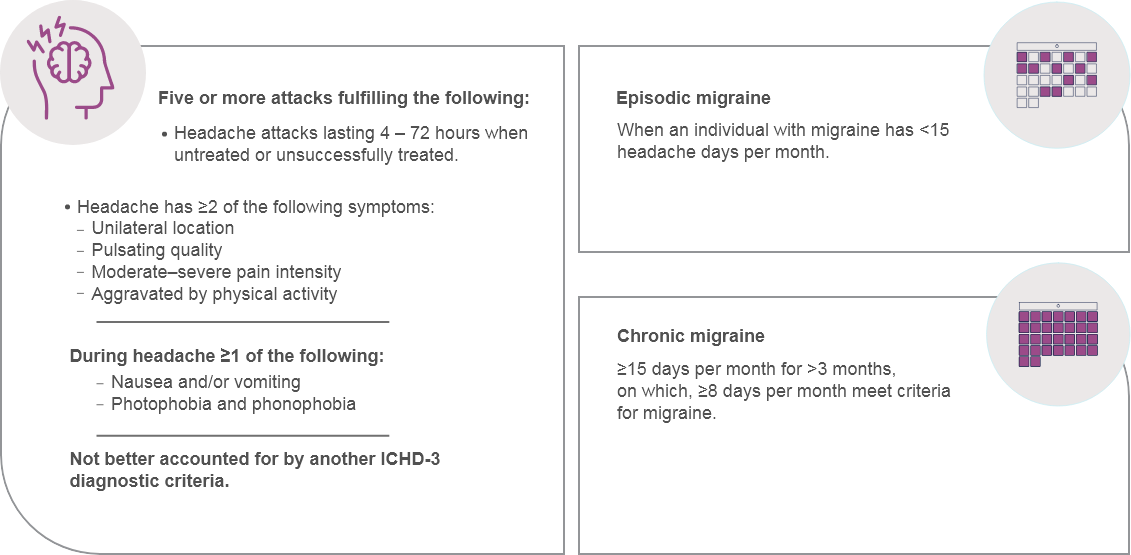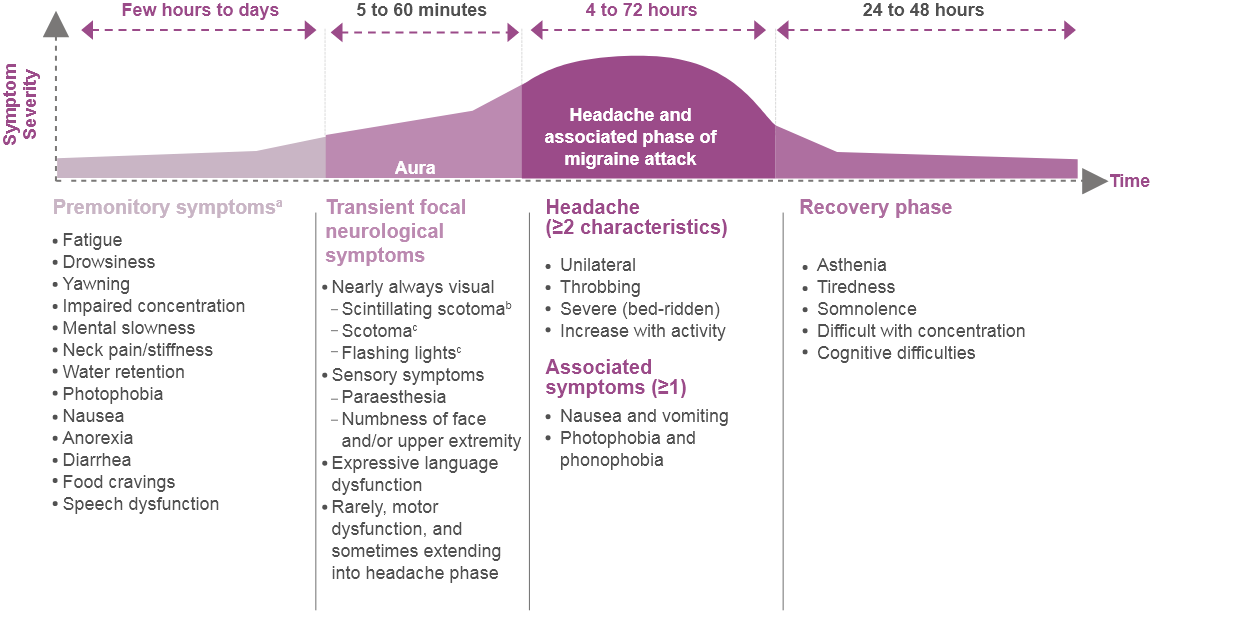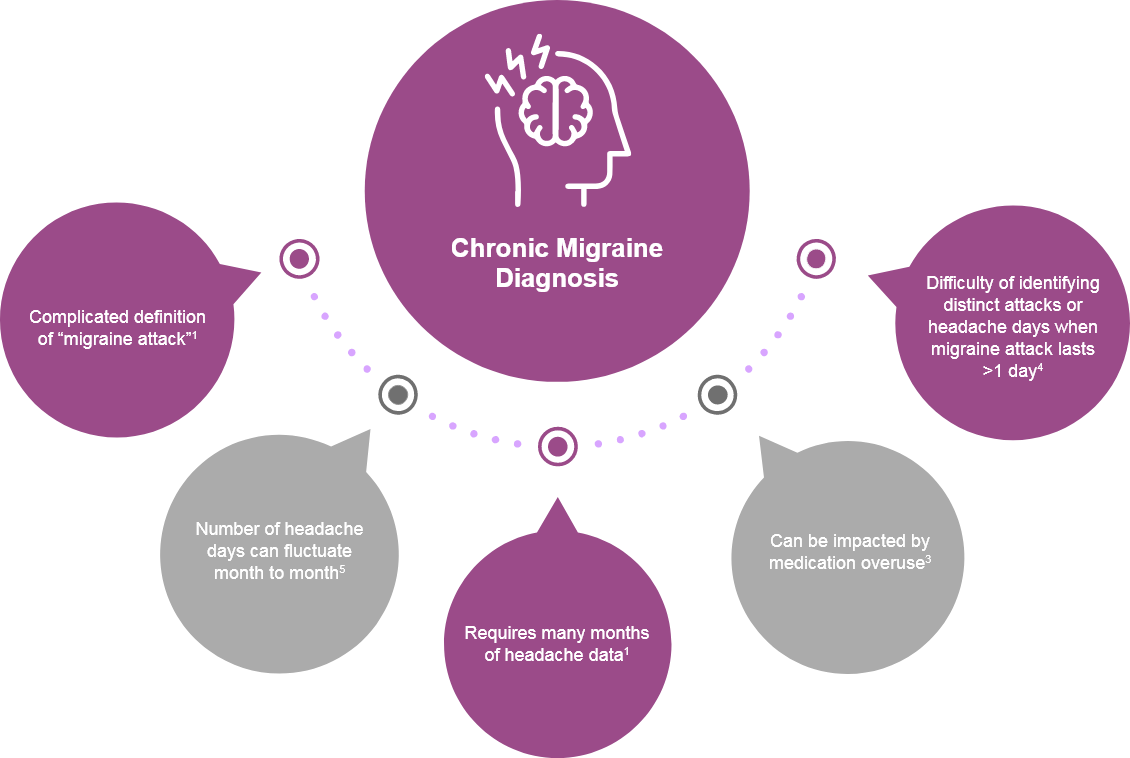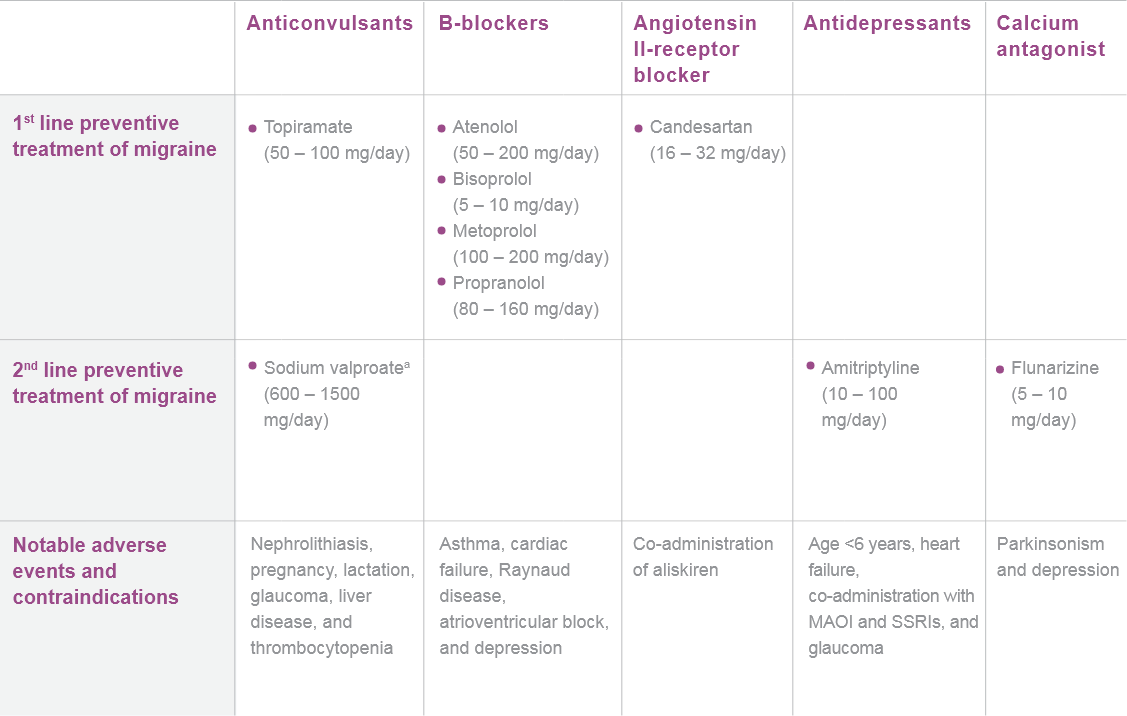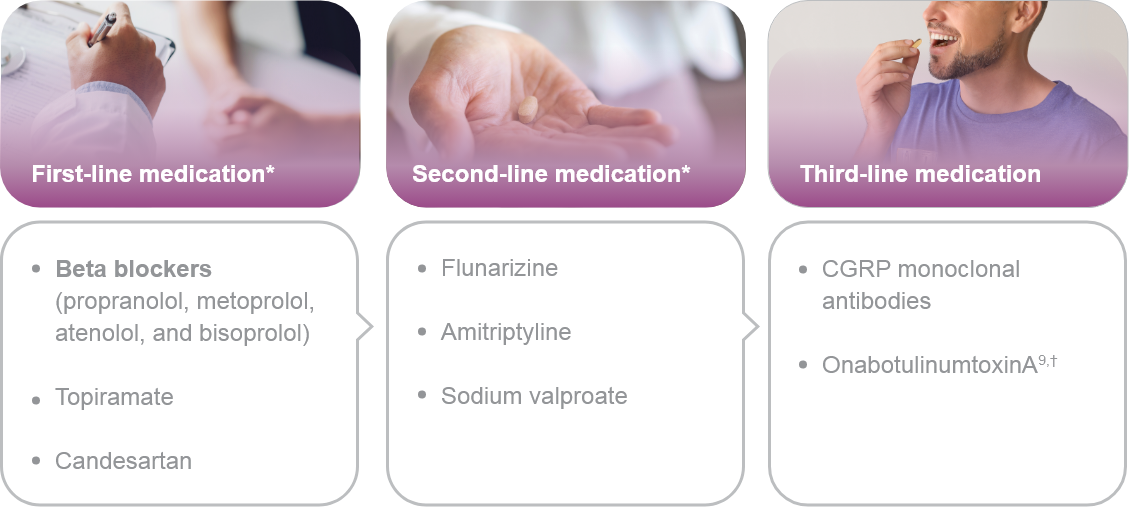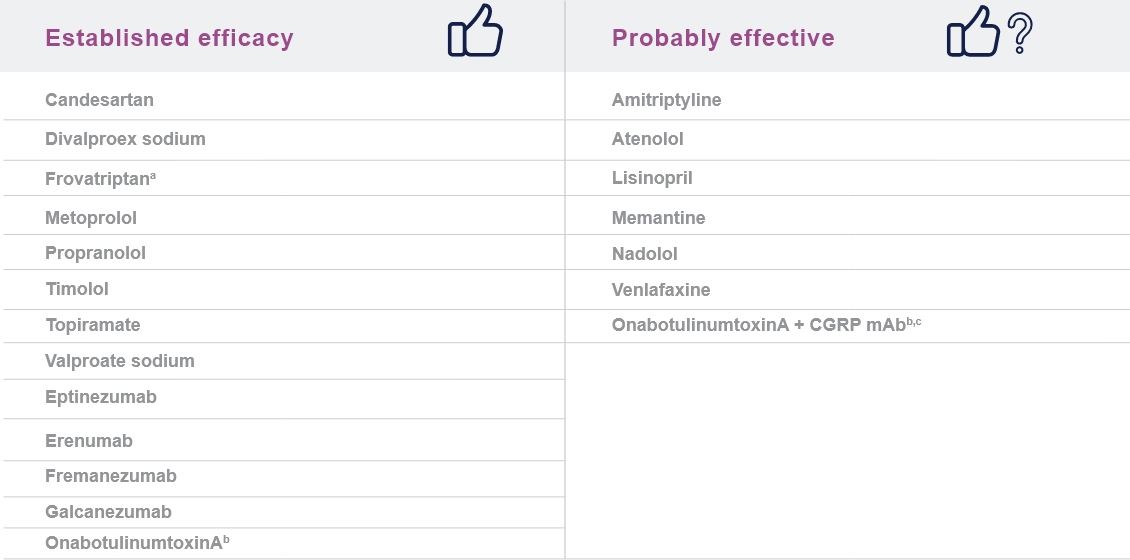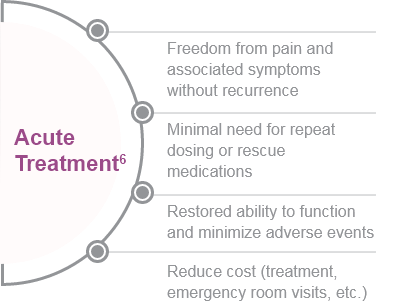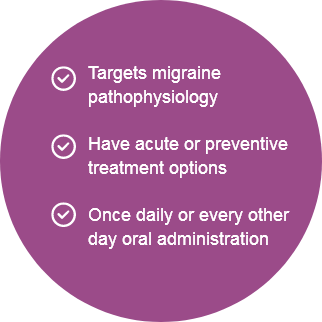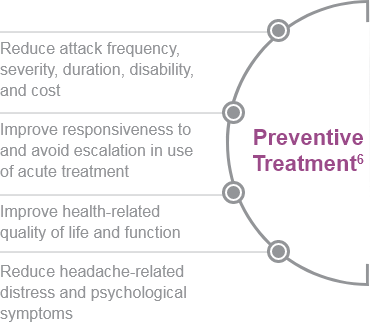1
Migraine Management
Migraine management should involve both acute and preventive treatment
Acute/Abortive Treatment6,7
Goals:
- Rapid and consistent freedom from pain and associated symptoms without recurrence6,7
- Restored ability to function6,7
- Minimal need for repeat dosing or rescue medications6,7
- Optimal self-care and reduced subsequent use of resources (e.g., emergency room visits, diagnostic imaging, clinician, and ambulatory infusion center visits)6
- Minimal or no adverse events6
- Cost consideration6
.
.
Preventive Treatment6
Goals:
- Reduce attack frequency, severity, duration, and disability
- Improve responsiveness to and avoid escalation in use of acute treatment
- Improve function and reduce disability
- Reduce reliance on poorly tolerated, ineffective, or unwanted acute treatments
- Reduce costs associated with migraine treatment
- Enable patients to manage their own disease
- Improve health-related quality of life
- Reduce headache-related distress and psychological symptoms
Guidelines
Preventive treatments
*Traditional treatment; †Limited to chronic migraine only; aShort-term prevention of menstrual-related migraine; evaluated and rejected by the FDA for this indication; bPrevention of chronic migraine; cOne Class IV trial based on AAN evidence classification.
AAN, American Academy of Neurology; CGRP, calcitonin gene-receptor peptide; EAN, European Academy of Neurology; EHF, European Headache Federation; FDA, Food and Drug Administration; mAb, monoclonal antibody; NSAID, non-steroidal anti-inflammatory drug; OnabotulinumtoxinA, botulinum toxin type A.
References
1. Headache Classification Committee of the International Headache Society (IHS). Cephalalgia 2018;38:1–211.
2. Ferrari MD, et al. Nat Rev Dis Primers. 2022;8(1):2.
3. Becker WJ, et al. Headache. 2017;57(9):1471–1481.
4. https://migrainebuddy.com/migraine/migrainesymptoms-the-stages-of-a-migraine. Accessed January 22, 2021.
5. Serrano D, et al. J Headache Pain. 2017;18:101.
6. Ailani J, et al. Headache. 2021;61(7):1021-1039.
7. Tzankova V, et al. CMAJ. 2023;195(4):E153-E158.
8. Eigenbrodt AK, et al. Nat Rev Neurol. 2021;17(8):501-514.
9. Bendtsen L, et al. J Headache Pain. 2018;19(1):91.
10. QULIPTA [package insert]. Dublin, Ireland: AbbVie. October 2021.
11. UBRELVY [package insert]. Madison, NJ: Allergan USA, Inc. March 2021.
12. NURTEC [package insert]. New Haven, CT: Biohaven. April 2022.



